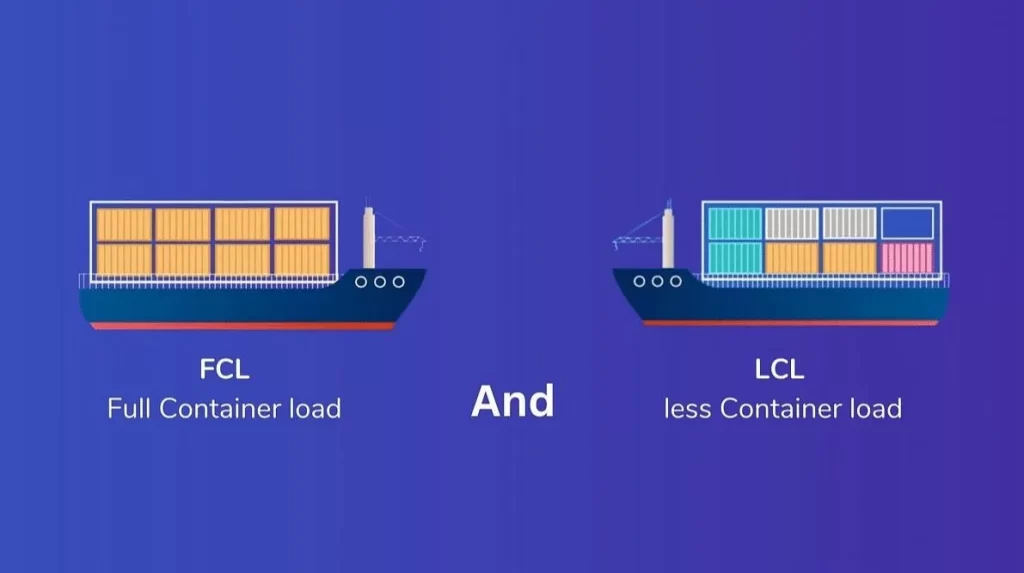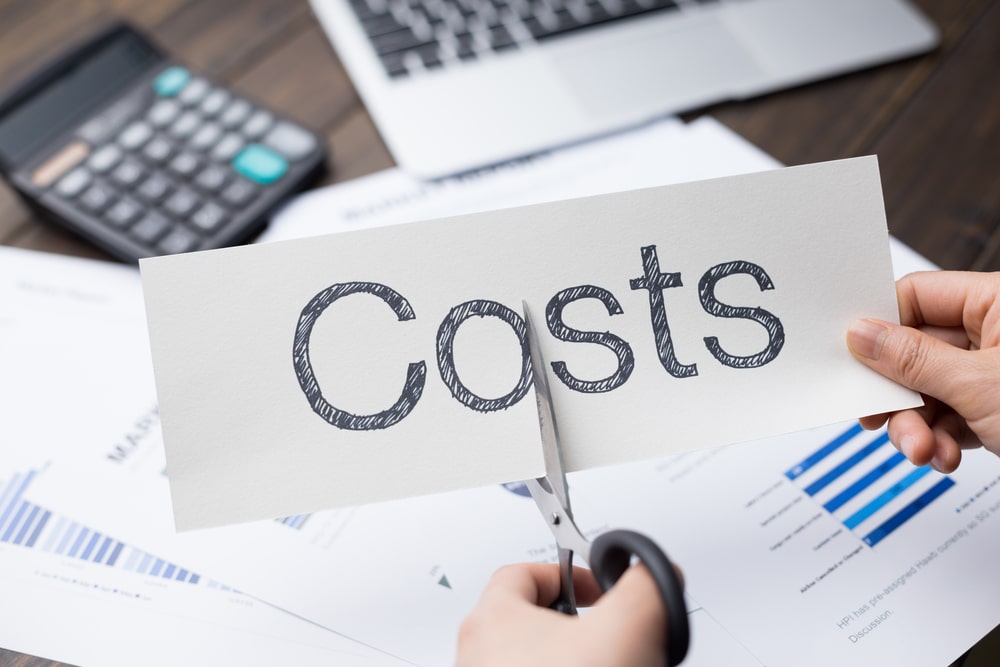- By TOP CHINA FREIGHT
- September 22, 2025
- Sea Freight, Shipping
Table of Contents
Understanding the sea freight from China to USA cost is essential for businesses importing goods internationally. Many importers face challenges such as fluctuating shipping rates, transit delays, and complex customs procedures. By gaining insights into cost components, transit times, and logistics strategies, companies can optimize operations and reduce expenses. This guide provides detailed explanations, practical tips, and expert strategies to manage sea freight cost-effectively while ensuring timely deliveries.

What Factors Influence Sea Freight from China to USA Cost?
Several elements impact shipping costs and efficiency:
- Cargo type: Full Container Load (FCL) is cost-effective for large shipments, while Less than Container Load (LCL) suits smaller volumes but may incur higher per-unit costs.
- Shipping routes & ports: Major Chinese ports such as Shanghai, Shenzhen, Ningbo, and Qingdao connect to US ports including Los Angeles, New York, Savannah, and Houston.
- Fuel prices and seasonal demand: Fluctuating fuel rates and peak-season shipping can significantly affect total cost.
- Customs & documentation: Accurate paperwork and compliance with US import regulations are crucial.
Working with experienced freight forwarders helps navigate these factors efficiently, ensuring cost-effective and timely deliveries.
How Long Does Sea Freight from China to USA Take?
Transit time depends on port selection, shipping route, and cargo type. Average sea freight transit time from China to USA ranges from 18 to 35 days, depending on the destination and service type.
| Origin Port | Destination Port | Transit Time (Days) | Notes |
|---|---|---|---|
| Shanghai | Los Angeles | 18–22 | Direct weekly sailings available |
| Shenzhen | New York | 25–30 | Ideal for electronics and textiles |
| Ningbo | Savannah | 28–33 | LCL and FCL options available |
| Qingdao | Houston | 30–35 | Suitable for industrial goods |
Peak seasons such as Chinese New Year and US holidays can extend transit times. Planning in advance is critical to avoid delays.
What Are the Cost Components of Sea Freight?

Understanding the breakdown of sea freight costs allows businesses to budget accurately:
| Cost Component | Description |
|---|---|
| Freight Rate | Charged per container (FCL) or per cubic meter/ton (LCL) |
| Bunker Adjustment Factor (BAF) | Fuel surcharge applied by carriers |
| Terminal Handling Charges (THC) | Loading/unloading fees at ports |
| Documentation Fees | Bills of lading, certificates, customs forms |
| Customs Duties & Taxes | US import duties based on cargo type and value |
| Insurance | Optional coverage for high-value goods |
Optimizing container utilization, consolidating shipments, and negotiating with forwarders can significantly reduce overall costs.
FCL vs LCL: Which Option Is Better?

| Shipping Method | Cost Efficiency | Transit Time | Pros | Cons |
|---|---|---|---|---|
| FCL (Full Container Load) | High for large shipments | Faster | Lower per-unit cost, secure cargo | Requires full container, upfront cost |
| LCL (Less than Container Load) | Better for small shipments | Slightly slower | Flexible, lower initial cost | Higher per-unit cost, multiple handling points |
For businesses shipping large volumes, FCL is more economical and secure. LCL is suitable for startups or small importers who cannot fill a full container.
How to Prepare Documentation for US Customs

Proper documentation ensures smooth customs clearance:
| Document | Purpose |
|---|---|
| Bill of Lading | Legal confirmation of cargo shipment |
| Commercial Invoice | Lists goods, quantity, and value |
| Packing List | Details of items in each package |
| Certificate of Origin | Confirms country of manufacture |
| Import Duty Payment Proof | Required for customs clearance |
| Insurance Certificate | Verifies cargo coverage |
Accurate paperwork reduces inspection delays and prevents fines or shipment rejection.
Can You Reduce Sea Freight from China to USA Cost?

Combine smaller shipments to maximize container utilization.
Reserve space ahead of peak seasons to avoid surcharges.
Less congested ports can reduce terminal handling fees.
Experienced freight forwarders often secure discounted rates.
Minimize cargo volume to lower LCL costs and prevent damage.
Common Challenges in Sea Freight to USA
Shipping from China to USA presents several challenges:
- Port congestion: Ports like Los Angeles and New York experience delays during peak seasons.
- Weather conditions: Typhoons in China or storms along the US coast may disrupt schedules.
- Cost fluctuations: Fuel surcharges and currency variations can affect the final cost.
- Customs inspections: Electronics, chemicals, and textiles may undergo stricter scrutiny.
Regulatory compliance: Proper documentation and adherence to US import rules are essential.
Mitigation strategies: Plan shipments well in advance, maintain transparent communication with freight forwarders, and consider alternative ports.
Packaging and Cargo Protection Tips
Proper packaging ensures cargo arrives safely:
- Sturdy, moisture-resistant containers protect goods from damage.
- Padding and cushioning safeguard fragile items.
- Palletization and shrink-wrapping stabilize bulk shipments.
- Clear labeling ensures correct handling during transit.
- Temperature-controlled containers for perishable goods.
- Cargo securing with straps or nets prevents shifting inside containers.
Insurance for high-value cargo provides additional protection against loss or damage.
How Technology Enhances Sea Freight Efficiency
Real-time updates on container location, estimated arrival, and delays.
Integrate shipment data with warehouse operations.
Predict costs, transit times, and potential port congestion.
Reduce errors in bills of lading, invoices, and customs forms.
Case Study: Shipping Electronics to Los Angeles

A US-based importer needed to ship 25 tons of smartphones from Shanghai. The business used FCL to maximize cost efficiency and reduce handling risks. The freight forwarder:
- Consolidated shipments for optimal container usage
- Ensured proper documentation and insurance coverage
- Provided real-time tracking updates
Outcome: Shipment arrived in 20 days at Los Angeles Port with no customs delays or damage. Strategic planning and professional handling reduced costs by 10% compared to prior LCL shipments.
Conclusion
Sea freight from China to USA cost depends on multiple factors including container type, shipping route, fuel prices, and customs requirements. By understanding cost components, transit times, and shipping strategies, businesses can minimize expenses, reduce delays, and optimize supply chain performance. Leveraging technology, proper packaging, and working with experienced freight forwarders ensures efficient, reliable, and cost-effective shipping. Strategic planning is key to maintaining smooth operations and maximizing profitability.
Need a Shipping Quote?
If you want expert guidance and peace of mind, our team is ready to assist.
TJ China Freight offers tailored solutions to help businesses of all sizes ship more reliably from China.

FAQ
Q1:What affects sea freight from China to USA cost?
Cost depends on container type, shipping route, fuel prices, customs duties, and seasonal demand. Optimizing container use reduces expenses.
Q2:How do I choose between FCL and LCL shipments?
FCL suits large shipments with lower per-unit cost; LCL is flexible for smaller volumes but may be slightly costlier per unit.
Q3:What US ports receive shipments from China?
Major ports include Los Angeles, New York, Savannah, and Houston. Port selection influences transit time and handling fees.
Q4:How can I avoid customs delays?
Submit accurate documentation, pay duties promptly, and work with experienced freight forwarders to streamline clearance.
Q5:Can sea freight shipments be insured?
Yes, insurance safeguards against loss, theft, or damage, especially for high-value or fragile goods.
